
6 minute read
ALING
from FLUX 2023: Part Two
A small farm in Northwest Oregon is helping men recover from addiction through responsibility, brotherhood and manual labor.
aking up before dawn, Louis Gonzalez climbs out of bed and drifts into the kitchen. He pours a glass of well water and whips up a plate of waffles and fruit. As 8 a.m. rolls around, Gonzalez picks up his breakfast and heads out to the pigpen. Tulip and Oscar, 700-pound pigs, grunt in excitement as Gonzalez carefully scales the metal gates. His jeans damp and boots muddied, Gonzalez rinses out the slop trays in the pigpen. He gives Oscar a nudge and encourages him to the other side of the pen. Oscar begrudgingly moves as Gonzalez teases him for being lazy.
Advertisement
“Come on, Oscar,” says Gonzalez. “Work with me.”
It’s another morning at Blanchet Farm, 62 acres of emeraldgreen pastures in Yamhill County, 36 miles southwest of Portland. On this working farm, Tulip and Oscar spend their days rolling around in the muddied field while goats scale a playscape built by local Boy Scouts just a few weeks ago. But for Gonzalez, it’s a morning much different from the ones he has experienced over the past 16 years. It was three months ago when Gonzalez came to Blanchet Farm, his first recovery program.
Distinct from many traditional recovery programs, Blanchet offers farm work as a method of substance abuse recovery. Opening in 1962, the farm can house 21 men. Farm work, animal therapy, beekeeping, woodworking and mechanical tasks are just some of the activities Blanchet provides as part of its recovery program. The farm is equipped with a woodshop, beehives, toolshed and animals: goats, pigs, hogs, chickens, ducks and dogs. Every Monday, Wednesday and Friday in the late afternoon, residents meet in the living room of the housing facility to attend an Alcoholics Anonymous meeting.
Blanchet Farm has a partnership with several organizations around the county and in Old Town Portland, where Blanchet House is located. In 1952, Blanchet House opened its doors to “help people suffering from extreme poverty, many of whom are unsheltered, housing insecure, food insecure and without community and friendship,” says Scott Kerman, executive director of Blanchet House and Blanchet Farm.
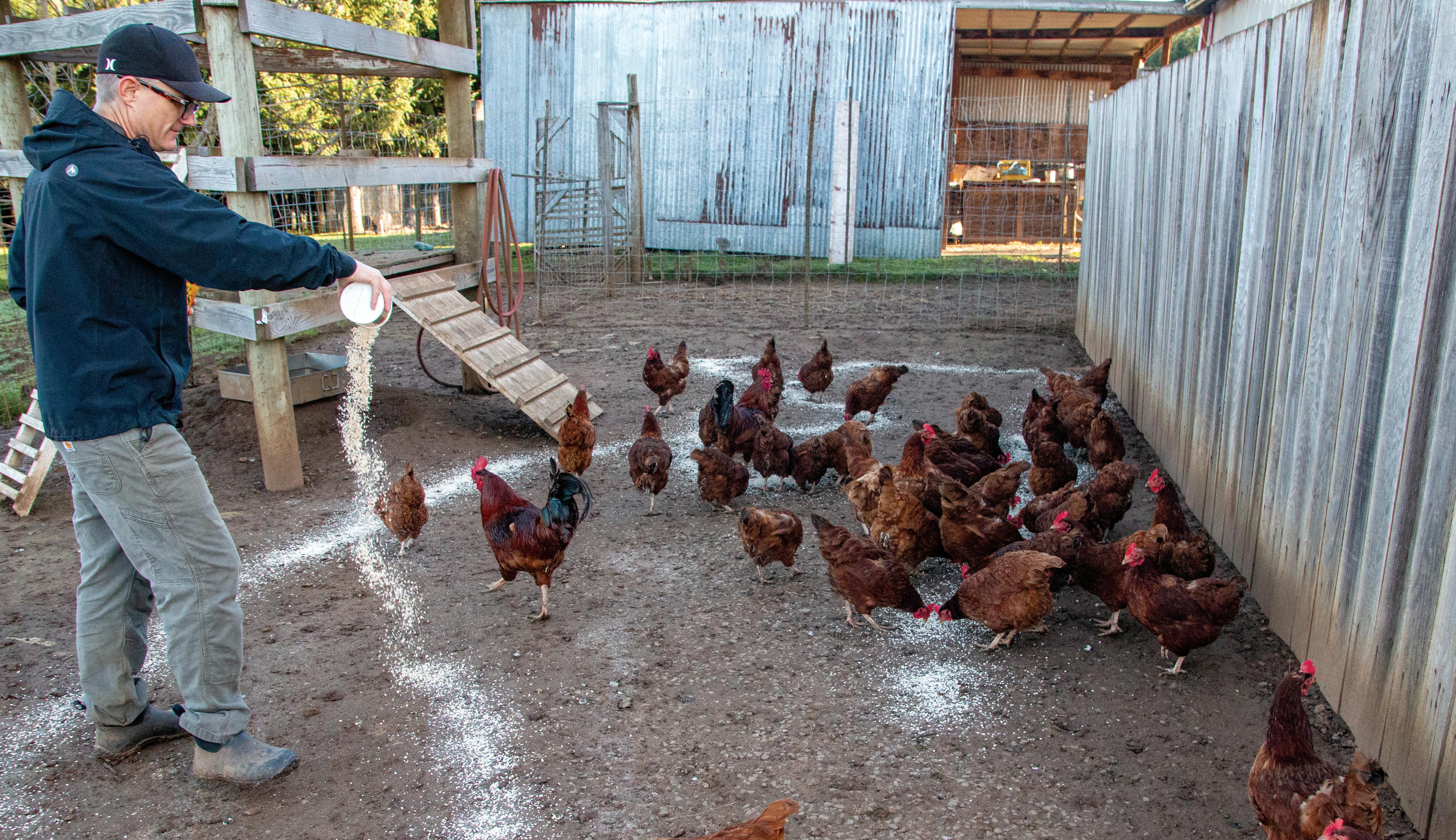
Kerman says that Blanchet seeks to provide residents with a range of assistance, including food, shelter and community. “We serve a lot of people for whom life has told them they don’t matter and no one cares about them,” says Kerman. “Through our service, we strive to say to people that they do matter and there are many people in our community who care about them without judgment or scorn.” Blanchet is free of cost to all residents.
“Here, there’s no pressure to pay rent or anything,” says Ron Lovegreen, once a resident of Blanchet. Lovegreen overcame drinking issues developed while working as a mechanic for 23 years. “You work here for three months on the farm and then once [you] do get a job, [you’re] allowed to stay here for four months.” After going through the program in 2015, Lovegreen became the farm’s foreman until deciding to leave in May.
Residents have the job of walking goats to a small pond on the property. Louis Gonzalez (in black) says, “I’m lucky to be the goat guy — a lot of guys want my job.”
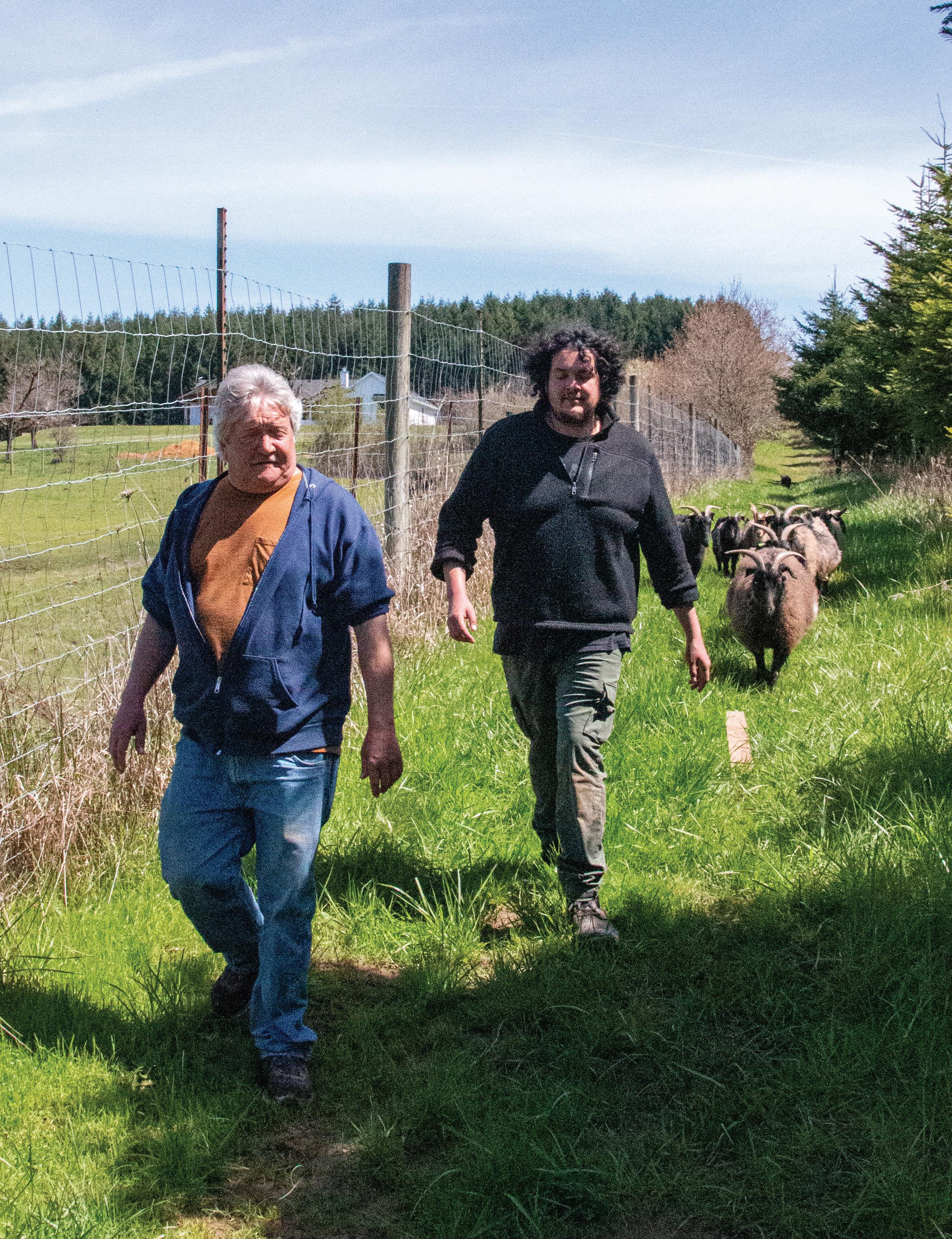
Blanchet Farm manager Ross Sears stands atop the deck outside of his office, gazing across the property with phone in hand. As he gets a call, Sears takes one last glance before opening the wooden window-paned door to his office and stepping inside. This call is the first of many Sears will take.
Sears’ day is filled with calls, meetings with contractors, resident intake and new resident interviews. From 8 a.m. to 4 p.m., Sears moves around his office, taking on whatever that day throws at him.
Sears grew up in Springfield, Oregon, playing a variety of sports throughout his adolescence. Still, being a quarterback and the center of attention would soon lead him to abuse substances.
Sears says he noticed he drank more than his high school peers. Alcohol provided an escape from the social anxieties of high school. Finally, he realized he “didn’t want that lifestyle anymore,” but going into recovery wasn’t easy.
After trying to quit “100 times” and being admitted into a medical detox in Portland, “I came to Blanchet when I was 41,” says Sears, who is now 56.
“I was terrified. Terrified,” Sears says. But in his experience, “the more you do [recovery], the easier it gets.”
On the farm, the road to recovery requires a list of chores, and that means getting your hands dirty. Since Louis Gonzalez arrived in February, he has been helping maintain the farm. On this early spring day, Gonzalez gets ready to move on to his next chore. He fastens the gates on the pen and says his goodbyes to Oscar and Tulip for the morning. He reaches into a box of chocolate chip cookies, pulling out four. Oscar’s and Tulip’s ears perk up at the sound of the stiff plastic box opening and closing. They excitedly drag themselves to their feet and lumber to the side of the gate, awaiting their cookies.
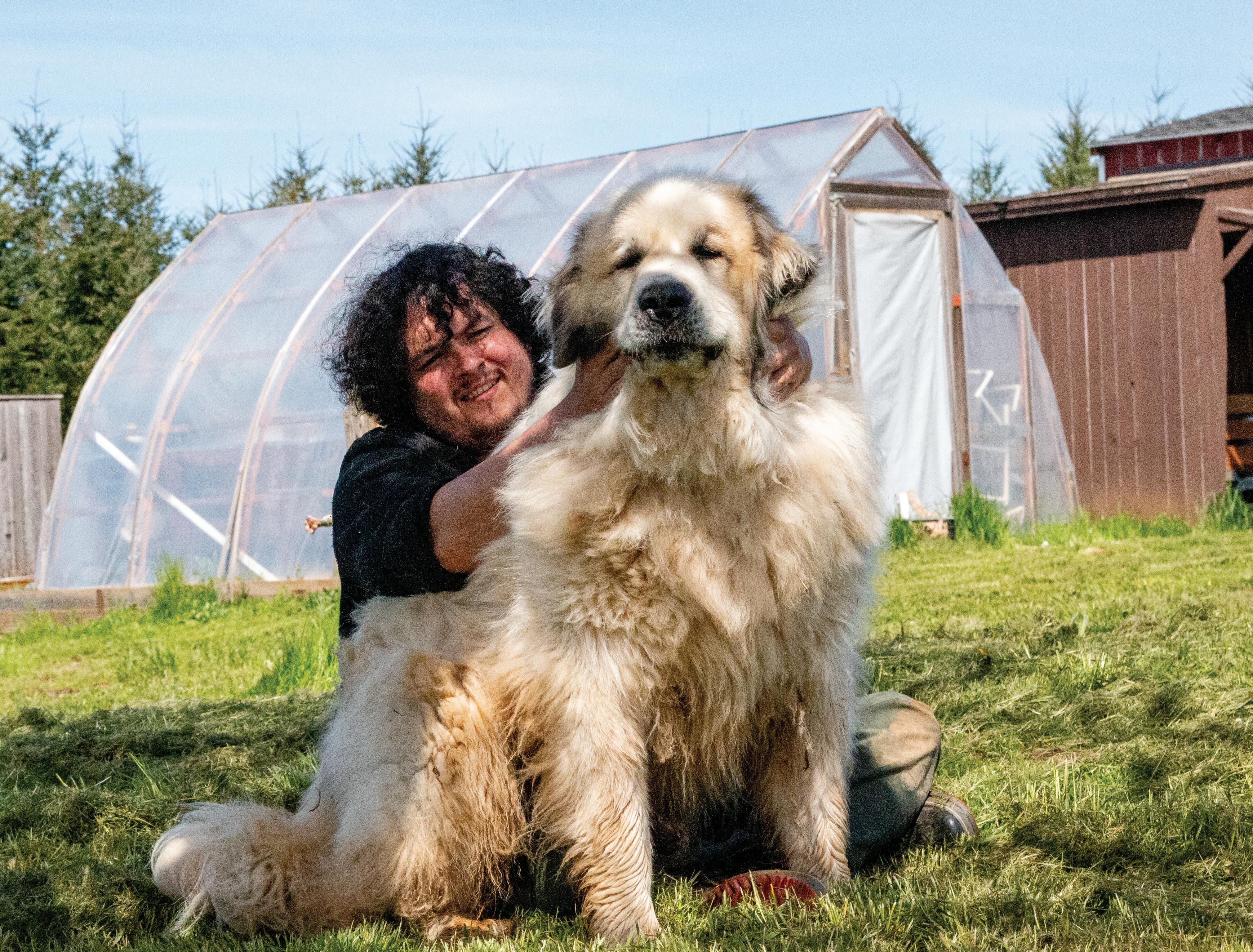
For Gonzalez, getting to this routine and to the farm was a long journey. He says that when he was 13, his parents divorced and he turned to alcohol. “It was very tumultuous trying to navigate that as a young man,” says Gonzalez.
Despite not being legal, he would find a way to consume alcohol if it was around. Later, during his early and mid-20s, he found himself drinking regularly, “more from impulse than from want.” At 29, he was hospitalized for his alcohol consumption. While in the hospital, he found a pamphlet for Blanchet Farm. He came to the farm in February.
“The structure [Blanchet] gave me, taking care of the animals — it’s been amazing,” Gonzalez says. “Taking the goats out, I never know what to expect.” Depending on how much energy the goats have, it can take anywhere from 45 minutes to two hours to get them corralled again.
For Gonzalez, Sears and Lovegreen, the brotherhood aspect is a big reason why Blanchet Farm works as well as it does. After work, the men will sit down in the living room — walls covered in wood paneling and framed photographs of former members — and watch sports together, relaxing on their time off.
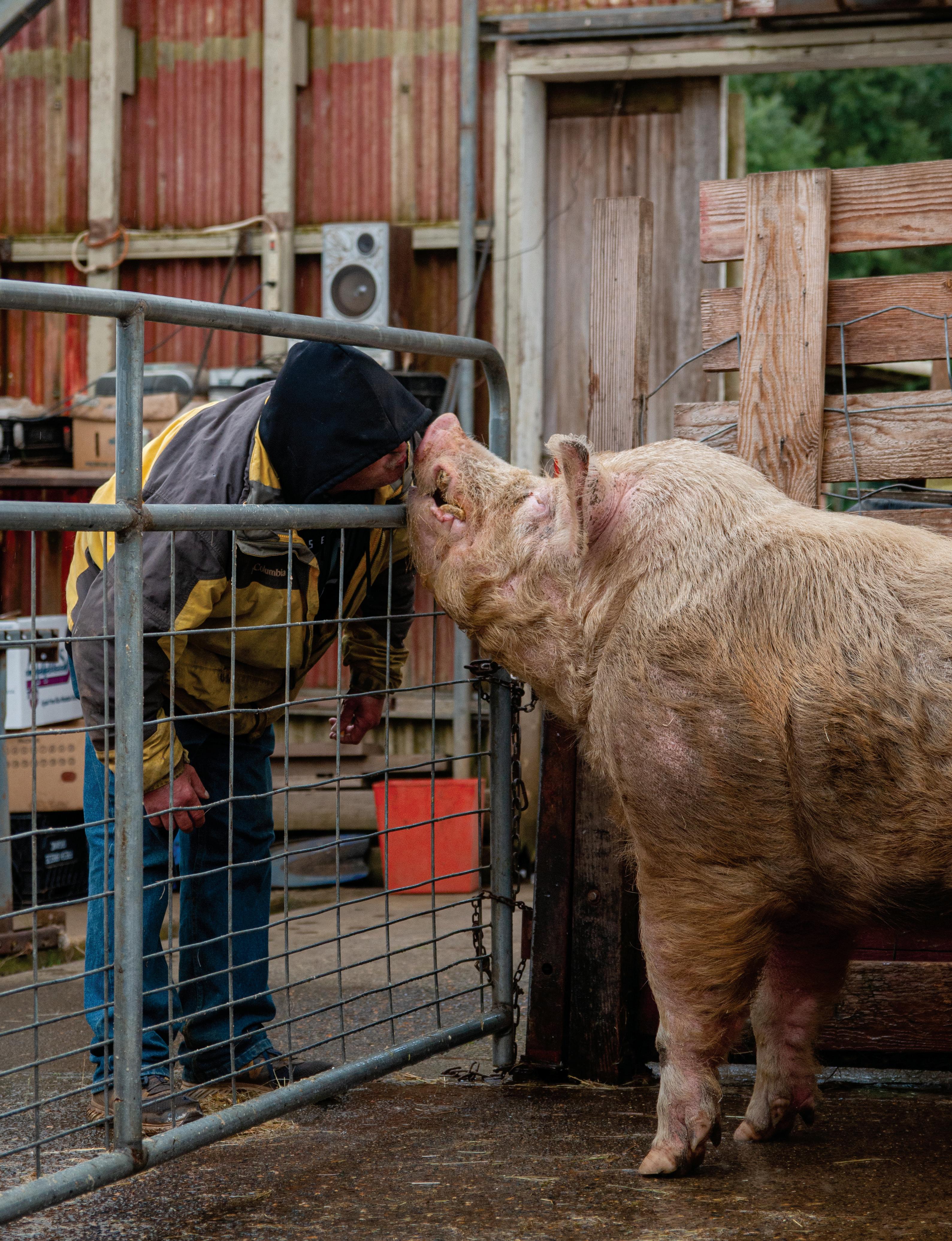
“The guys control the flow of the farm,” says Sears.
The residents are responsible for feeding all of the animals that Blanchet Farm houses, tending to the garden in the spring and summer, keeping the house tidy, and holding themselves and each other accountable for their sobriety. Residents are expected to do their part around the farm, respecting everyone in the program while doing so. “We try to live harmoniously,” says Gonzalez.
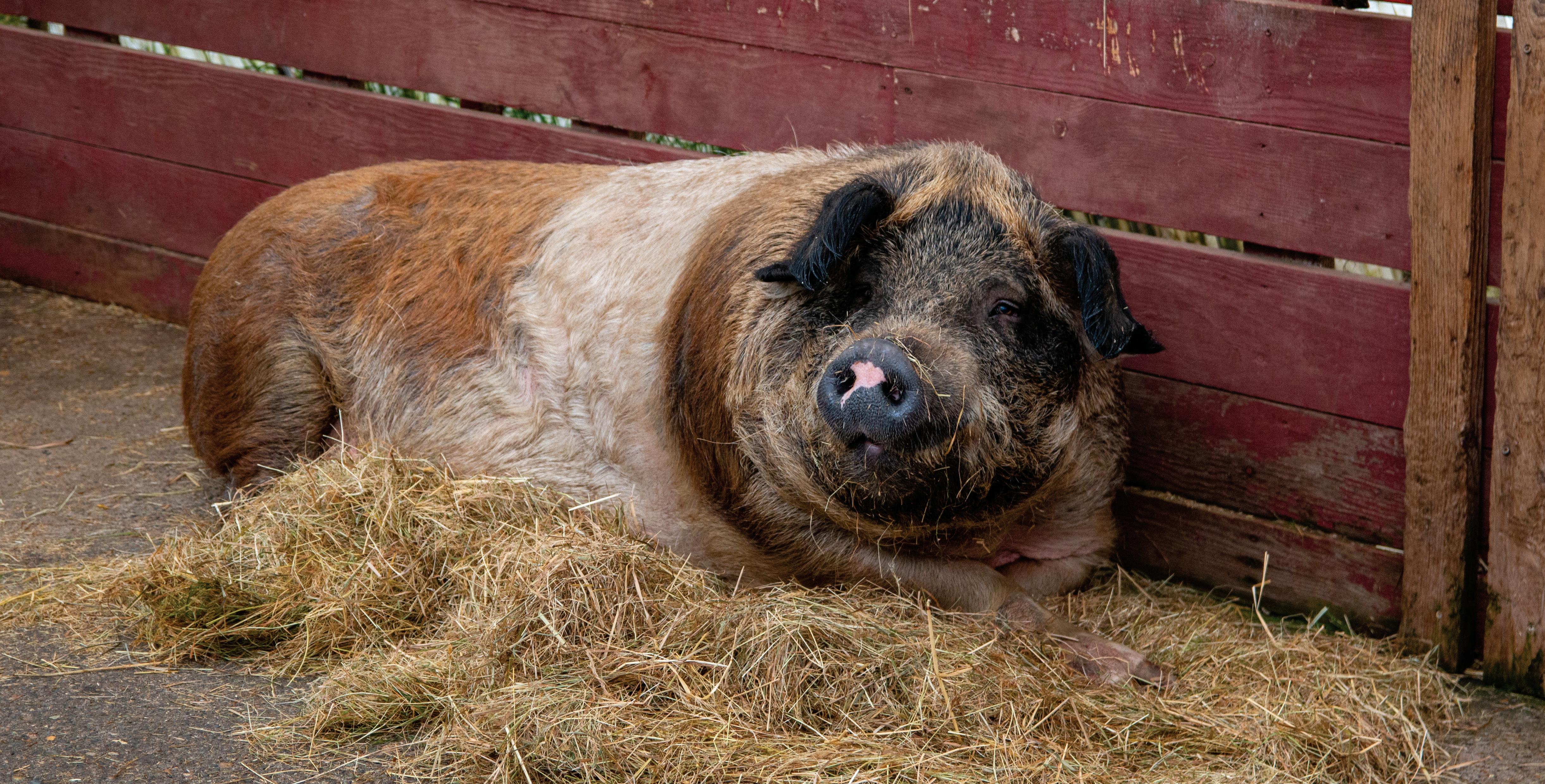
Sears, who does the intake on prospective patients, says he can tell when a possible resident is going to work out or not, and when they’re “flirting around the truth.”
When Lucas Pattison arrived at the farm in March 2017, he had no idea that there was a woodshop. He stayed at the farm for just a month, but ever since he has been sober. Now, he runs his own woodworking business, Pattison Design, in Portland. Pattison makes the occasional trip to the farm from his home in the city.
Blanchet Farm is a no-kill farm and receives many of the animals in its care via donations. Blanchet House and Farm receive food the same way; 90% of the food served is donated from partners such as Safeway, Trader Joe’s and local restaurants, says Kerman. Blanchet takes food that, regardless of looks, can go on to feed hundreds and provide warm meals to many in need.
For Sears and many others, Blanchet Farm has become a “safe place.” He no longer is bothered by alcohol advertising. Similarly, Pattison can attend sporting events and bars with his friends without worrying about drinking.
But for Gonzalez, seeing alcohol commercials is still difficult. “Watching sports and beer commercials, there’s always an urge,” says Gonzalez. “Ultimately, it’s washed away by thinking about the after-effects: the hangovers, not getting out of bed for days, that kind of stuff. I think about what I want to do with the next 10 years of my life.”
For men like Gonzalez, professional help plays a vital role in staying on the path to sobriety. Harrington Health Clinic (HHC) first opened in April 2020 inside Blanchet House. The nonprofit “provides primary care and mental health care services to the residents of Blanchet,” says clinic founder and nurse Emily Harrington.
HHC is staffed by a family practitioner, a psych-mental health nurse practitioner, nurses and nursing students who connect “farm residents to virtual care/visits with outside providers” and administer vaccines, says Harrington.
But everyone’s sobriety journey is different. Some residents that come to Blanchet have children and spouses. Others have been unhoused, and some have even been to prison. Some have been through recovery multiple times; for others, once does the trick. The road to recovery looks different for every individual.
As Gonzalez continues his journey at Blanchet Farm, he says he is growing stronger mentally and physically. At the end of the day, Gonzalez heads into the garage and begins to work out. It’s something he does frequently to keep his mind and body in shape. For Gonzalez, myriads of things aid him on his path to recovery.
Throughout the country, there are many different types of recovery programs and methods for substance abuse. While some recovery programs offer a cookie-cutter set of guidelines, others offer diverse programs. No matter what the recovery program entails, they all are connected by the thought of helping people recover.

Turn your passions into a communication career. Build your own track with courses in:

• Science communication


• Sports communication
• Game studies
• Documentary
• Visual storytelling
• Brand responsibility
• Immersive media
• And many more!











